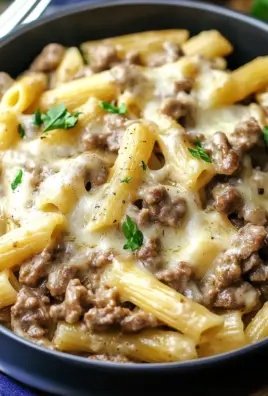Eggs Benedict is a timeless brunch favorite that combines rich, buttery flavors with a perfectly balanced texture. A crisp, toasted English muffin serves as the base, topped with savory back bacon, a delicately poached egg, and a velvety hollandaise sauce. Every bite delivers a satisfying contrast of crispy, creamy, and savory elements, making it one of the most beloved breakfast dishes.

Despite its gourmet reputation, making Eggs Benedict at home is easier than you might think. With a few essential techniques, you can master poached eggs and hollandaise sauce to create a restaurant-quality dish in your own kitchen. Whether you’re preparing it for a weekend brunch or a special occasion, this step-by-step guide will help you achieve perfect results every time.
Why You’ll Love This Recipe
- Classic and indulgent – A rich, flavorful dish that elevates any breakfast or brunch.
- Easier than it looks – Master poaching eggs and making hollandaise with simple tips.
- Customizable – Try variations like smoked salmon (Eggs Royale) or sautéed spinach (Eggs Florentine).
- Perfect for entertaining – Impress guests with a dish that feels restaurant-worthy.
Essential Tools and Equipment
To ensure a smooth cooking process, having the right tools on hand is key:
- Medium saucepan – For poaching the eggs.
- Slotted spoon – Helps remove poached eggs gently without breaking.
- Small ramekin or bowl – Prevents egg whites from spreading too much when poaching.
- Whisk – Crucial for making hollandaise sauce.
- Heatproof mixing bowl – Used for making hollandaise over a double boiler.
- Baking sheet – To toast the English muffins.
- Skillet – For browning the back bacon.
Each tool plays a role in ensuring the components of the dish come together perfectly.
Preparation Tips
- Use fresh eggs – Fresh eggs hold their shape best when poached.
- Keep ingredients warm – The dish is best when all components are at the right temperature.
- Toast muffins until golden brown – This helps maintain a crisp texture under the sauce.
Ingredients
For the Poached Eggs:
- 8 large eggs
- 1 tablespoon white vinegar
For the Eggs Benedict:
- 8 slices back bacon (Canadian bacon)
- 4 English muffins, halved
- ¼ cup butter, softened
- 1 cup hollandaise sauce
- 1 tablespoon chives, finely chopped (for garnish)
Step-by-Step Instructions
Step 1: Poach the Eggs
- Fill a medium saucepan with water and bring it to a gentle boil.
- Add the white vinegar, then reduce the heat to a bare simmer so only small bubbles form.
- Crack an egg into a small ramekin. Slowly slide it into the water. Repeat for three more eggs.
- Turn off the heat, cover the pot, and let the eggs cook for 4 minutes (for soft yolks) or 5+ minutes (for firmer yolks).
- Use a slotted spoon to remove eggs and place them on a paper towel-lined plate. Repeat with the remaining eggs.
Step 2: Prepare the English Muffins & Bacon
- Heat a skillet over medium-high heat. Add the back bacon and cook for 1-2 minutes per side until lightly browned. Set aside.
- Preheat the oven to broil. Butter each English muffin half and place them cut side up on a baking sheet.
- Broil for 1-3 minutes until golden brown and crispy.
Step 3: Assemble the Eggs Benedict
- Place a slice of back bacon on each toasted English muffin half.
- Carefully place a poached egg on top.
- Spoon warm hollandaise sauce generously over the egg.
- Garnish with finely chopped chives.
Notes & Variations
- For a soft poached egg: Cook for 4 minutes.
- For a firmer yolk: Cook for 5+ minutes.
- Make it vegetarian: Replace the bacon with sautéed spinach for Eggs Florentine.
- Try smoked salmon: Swap bacon for smoked salmon to create Eggs Royale.
Serving Suggestions
Eggs Benedict is a rich, indulgent dish that pairs well with fresh, light, and slightly acidic sides. Here are some serving ideas to complete your meal:
- Classic Brunch Style: Serve with a hot cup of coffee or fresh orange juice for a well-rounded breakfast.
- Healthy Twist: Add avocado slices or a simple arugula salad to lighten the dish.
- Luxury Upgrade: Swap back bacon for smoked salmon (Eggs Royale) or sautéed spinach (Eggs Florentine).
- Spicy Kick: Sprinkle cayenne pepper or add a dash of hot sauce for a little heat.
8 Delicious Side Dish Ideas
- Crispy Hash Browns – A crunchy contrast to the creamy hollandaise and poached eggs.
- Roasted Asparagus – A fresh, slightly bitter vegetable that pairs well with hollandaise sauce.
- Fresh Fruit Salad – A mix of berries, melon, and citrus adds a refreshing touch.
- Sautéed Spinach & Mushrooms – Earthy flavors that complement the richness of the dish.
- Buttery Grits – A Southern-inspired side that provides a soft and creamy texture.
- Avocado Slices – Adds a creamy, slightly nutty flavor while keeping the meal balanced.
- Sweet Potato Home Fries – A slightly sweet, crispy option that pairs well with the savory elements of Eggs Benedict.
- Mimosa or Bloody Mary – The ultimate brunch drink pairing for a restaurant-style experience.
Common Mistakes & How to Avoid Them
Even experienced cooks can make mistakes when preparing Eggs Benedict. Here are some of the most common pitfalls and how to avoid them.
1. Overcooking the Poached Eggs
Poached eggs should have firm whites with a soft, runny yolk. If left in the water too long, the yolk will harden, losing its signature texture.
Solution: Remove the eggs from the water at the 4-minute mark for a soft yolk or 5+ minutes for a firmer yolk.
2. Poached Eggs Spreading Too Much
If the egg whites spread out in the water instead of forming a compact shape, the result can be messy.
Solution: Use fresh eggs and add a tablespoon of white vinegar to the simmering water to help the egg whites coagulate faster.
3. Soggy English Muffins
A lightly toasted muffin provides structure to hold the toppings. Without proper toasting, the sauce and egg will cause the muffin to become mushy.
Solution: Broil the muffins for 1-3 minutes until golden brown and crispy before assembling.
4. Cold Ingredients Affecting the Dish
Since Eggs Benedict consists of multiple components, some parts may cool down before serving.
Solution: Keep everything warm by covering poached eggs with a paper towel, warming hollandaise sauce gently, and reheating bacon if necessary.
5. Broken or Curdled Hollandaise Sauce
Hollandaise sauce can separate or become too thick if overheated.
Solution: Whisk constantly over low heat, and if the sauce starts to break, add a teaspoon of warm water and whisk vigorously to bring it back together.
6. Using Store-Bought Hollandaise Without Enhancements
Pre-made hollandaise sauce lacks the fresh, buttery flavor of homemade sauce.
Solution: If using store-bought sauce, whisk in a splash of lemon juice and a bit of melted butter to improve the taste and texture.
7. Not Drying the Poached Eggs
Excess water from the poached eggs can dilute the hollandaise sauce and make the dish watery.
Solution: Place poached eggs on a paper towel before assembling to absorb any extra moisture.
8. Rushing the Process
Eggs Benedict requires careful timing, and rushing through the steps can lead to uneven results.
Solution: Prepare all components ahead of time so that assembly is smooth and efficient.
Recipe Tips & Make-Ahead Options
Poached Eggs
Poaching eggs ahead of time can save a lot of effort, especially when cooking for a crowd.
- Make-ahead method: Poach eggs as usual, then transfer them to a bowl of ice water to stop the cooking process.
- Storage: Keep poached eggs submerged in cold water in an airtight container in the fridge for up to 5 days.
- Reheating: Warm eggs in simmering (not boiling) water for about 1 minute before serving.
Hollandaise Sauce
Hollandaise sauce is best served immediately, but it can be stored and reheated carefully.
- Storage: Keep in an airtight container in the refrigerator for up to 2 days.
- Reheating: Warm the sauce gently over low heat, whisking constantly. If it thickens too much, add a teaspoon of warm water and whisk to loosen the texture.
- Tip: Avoid microwaving hollandaise, as it can separate.
Toasted English Muffins
Toasted muffins can lose their crispness if stored improperly.
- Storage: Keep them in an airtight container at room temperature for up to 2 days.
- Reheating: Toast again in the oven at 350°F (175°C) for 5 minutes to restore crunch.
Back Bacon (Canadian Bacon)
- Storage: Cooked bacon can be refrigerated for up to 3 days in an airtight container.
- Reheating: Warm in a skillet over medium heat for about 1 minute per side before assembling.
Frequently Asked Questions (FAQs)
1. Can I make Eggs Benedict ahead of time?
Yes, but it’s best to prepare individual components separately. Poached eggs, bacon, and hollandaise sauce can be made in advance and reheated just before serving. Toast the English muffins fresh for the best texture.
2. How do I fix broken hollandaise sauce?
If hollandaise sauce starts to separate, whisk in a teaspoon of warm water or melted butter while stirring continuously to bring it back together.
3. What’s the best substitute for back bacon?
If you don’t have back bacon (Canadian bacon), you can use:
- Smoked salmon (for Eggs Royale)
- Sautéed spinach (for Eggs Florentine)
- Ham or regular bacon for a traditional twist
4. Can I use store-bought hollandaise sauce?
Yes, but homemade hollandaise has a fresher, richer taste. If using store-bought, improve the flavor by whisking in a little lemon juice and melted butter before serving.
5. Why do my poached eggs spread out too much in the water?
This happens if the eggs are too old or the water temperature is too high. To fix this:
- Use fresh eggs for firmer whites.
- Add a tablespoon of white vinegar to the water to help the egg whites set faster.
- Keep the water at a gentle simmer, not a rolling boil.
6. Can I freeze poached eggs?
Freezing poached eggs is not recommended, as the texture changes significantly. If you need to prep in advance, store them in cold water in the fridge and reheat in simmering water when ready to serve.
7. What can I do if my hollandaise sauce is too thick?
Whisk in a few drops of warm water or lemon juice to thin it out until you reach the desired consistency.
8. Can I make Eggs Benedict without an English muffin?
Yes, you can use alternatives like:
- Toasted sourdough bread
- Hash browns as a crispy base
- Biscuits for a Southern-style twist
Conclusion
Eggs Benedict is a dish that rewards patience and attention to detail. By mastering poached eggs, hollandaise sauce, and proper assembly, you can create a brunch classic that rivals any restaurant version. Whether you’re making it for a special occasion or a weekend treat, following these tips will help you achieve the perfect balance of flavors and textures.
With make-ahead options and troubleshooting advice, you can confidently serve this dish without stress. Try different variations, experiment with toppings, and enjoy the satisfaction of a perfectly crafted Eggs Benedict at home.
Eggs Benedict
Ingredients
For the Poached Eggs:
- 8 large eggs
- 1 tablespoon white vinegar
For the Eggs Benedict:
- 8 slices back bacon Canadian bacon
- 4 English muffins halved
- ¼ cup butter softened
- 1 cup hollandaise sauce
- 1 tablespoon chives finely chopped (for garnish)
Instructions
Poach the Eggs:
- Bring a pot of water to a boil. Add the vinegar, then reduce the heat to a gentle simmer.
- Crack an egg into a small ramekin, then gently drop it into the water. Repeat with three more eggs.
- Turn off the heat, cover the pot, and let the eggs cook in the hot water for about 4 minutes, or until the whites are set and the yolks are still runny.*
- Use a slotted spoon to remove the eggs and place them on a paper towel-lined plate. Repeat with the remaining eggs.
Prepare the Eggs Benedict:
- Heat a skillet over medium-high heat. Add the slices of back bacon and cook for 1-2 minutes per side until browned. Set aside.
- Set your oven to broil. Spread butter on each English muffin half and place them cut side up on a baking sheet.
- Broil for 1-3 minutes, or until golden brown.
- To assemble, place a slice of back bacon on each toasted muffin half. Carefully place a poached egg on top, then spoon hollandaise sauce over the egg. Garnish with chives.




Leave a Comment